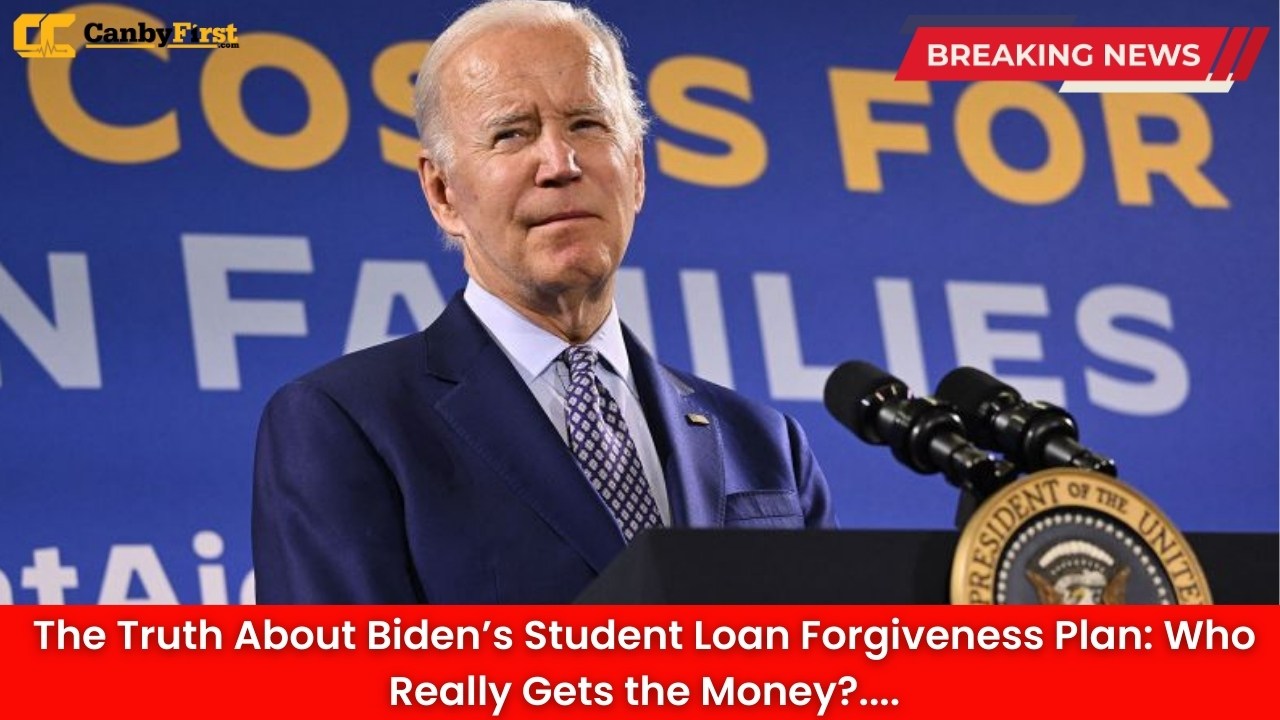President Joe Biden’s student loan forgiveness plan has become one of the most talked-about policy decisions in recent years, drawing both praise and criticism across the political spectrum. While the administration says it aims to deliver much-needed financial relief for millions of Americans drowning in debt, questions linger: who truly benefits from the plan, and where is the money really going?
Breaking Down the Basics
The plan centers on forgiving a portion of federal student loans for eligible borrowers, particularly targeting low and middle-income earners. For many, this can translate into thousands of dollars wiped away from outstanding balances, easing financial burdens that have loomed for decades. The White House hopes this effort will not only provide relief to individuals but also stimulate broader economic activity by giving freed borrowers more spending power.
The Income Factor
Eligibility for forgiveness comes down heavily to income thresholds. Borrowers earning under a set annual income cap stand to gain the most. According to administration guidelines, individuals making less than a specified yearly amount, and households under a higher joint threshold, qualify for the most significant debt reduction. This ensures that, at least on paper, the plan primarily impacts working and middle-class Americans rather than high earners.
Also Read
Winners of the Program
The biggest winners appear to be:
-
Recent graduates carrying substantial federal loan balances but earning modest incomes in entry-level jobs.
-
First-generation college students who took out significant loans without the financial backing of wealthy families.
-
Public service workers and teachers who have long struggled despite stable employment, as their relatively lower pay makes them prime candidates for relief.
-
Borrowers from minority communities, who statistically hold higher amounts of student debt and often face greater financial hurdles in repayment.
For these groups, loan forgiveness could mean a tangible change in quality of life—allowing them to pursue home ownership, launch small businesses, or build personal savings.
Who Gets Left Behind?
Not everyone emerges a winner under this policy. Borrowers with private student loans, which often carry high interest rates, see no relief. Similarly, individuals who already paid off their student loans, sometimes through years of sacrifice and second jobs, may feel penalized by being excluded from a benefit that others will now enjoy.
Additionally, critics argue that some higher-income earners who qualified under technical thresholds but retain stable, well-paying careers could receive forgiveness they may not truly “need.” This has fueled debate over whether the system is balanced or unintentionally favors certain groups.
How the Money Flows
The federal government is essentially writing off a portion of outstanding balances rather than handing out direct cash. The “money” exists as erased debt rather than new checks in borrowers’ hands. This means the actual cost shifts to taxpayers, raising questions about fairness. Supporters argue that these costs are an investment in future economic growth, while opponents say everyday taxpayers—including those who never attended college—are footing the bill.
Political and Economic Impact
For Biden, the plan is as much a political gamble as it is an economic one. Younger voters, saddled with debt, may feel seen and supported, potentially bolstering Democratic momentum. On the other hand, fiscal conservatives warn of ballooning federal debt, fearing long-term impacts on taxpayers and inflation.
Economists remain split. Some highlight the immediate benefit of increased consumer spending from relieved borrowers, while others warn that the initiative may not address the root of the problem: the skyrocketing cost of higher education itself. Without broader reforms, analysts fear student debt could once again reach crisis levels in just a few years.
The Root Problem: College Affordability
Forgiveness plans treat the symptom rather than the disease. College tuition has soared over the last few decades far beyond inflation, leaving generations of Americans trapped. While wiping out existing debt helps millions today, it does little to safeguard tomorrow’s students from encountering the exact same problem. Calls for reforms in tuition pricing, federal oversight on institutions, and expanded grants are growing louder alongside demands for forgiveness.
Public Sentiment
Public opinion remains divided. For borrowers writing off thousands of dollars in debt, the policy feels like a second chance. For others—especially those who already repaid loans or never took them on—the plan raises deep concerns about fairness and accountability. It has also sparked a cultural debate about personal responsibility versus structural inequality, with both sides claiming the moral high ground.
Looking Ahead
The success of Biden’s student loan forgiveness plan will not be measured overnight. It could redefine how the nation views education, debt, and opportunity. Yet at the heart of it all lies a crucial question that policymakers must confront: is this relief a one-time Band-Aid, or the start of a fundamental reform in America’s higher education system?
As the dust settles, one thing remains clear: not everyone wins, not everyone loses, and the real truth about the plan is that it reshapes the financial future of millions while reigniting a national debate about equity, opportunity, and the role of government.












